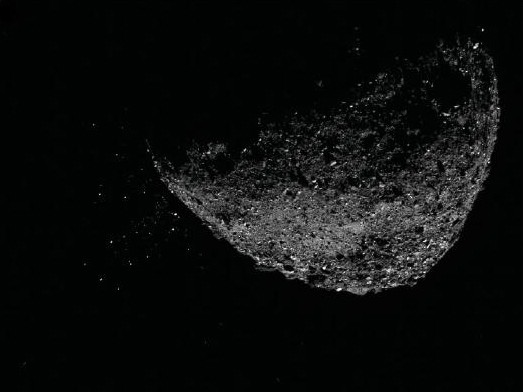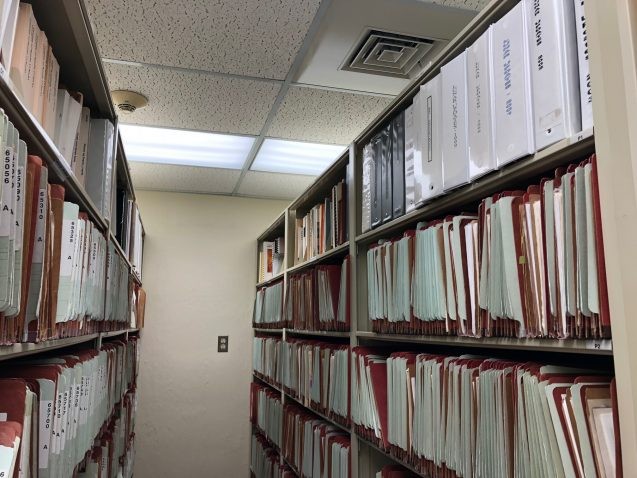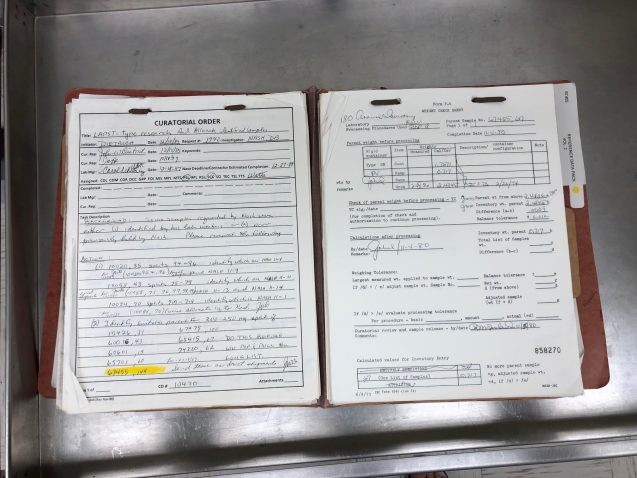An Archive of the Stars Is Born
NASA has designated a group at Lamont-Doherty Earth Observatory with preserving and making easily accessible data from all the extraterrestrial material curated by the agency.

Last month, a capsule aboard NASA’s OSIRIS-REx spacecraft finished a seven-year, 4 billion-mile journey from Earth to the asteroid Bennu and back, when it plummeted in a fiery descent to the Utah desert. Inside lay cradled about a half-pound of rubble captured from Bennu—the United States’ first successful mission to return material from an asteroid, and only the third in the world. Soon, small samples will be parceled out to more than 200 scientists at institutions around the globe, who will perform myriad chemical analyses in years to come. These studies may among other things help unravel the mysteries of how the Solar System, and our own planet, were born and evolved.
Like other NASA-curated extraterrestrial materials including meteorites, Moon rocks and cosmic dust, the Bennu samples will generate huge amounts of data. But in recent years, NASA has recognized a big problem: for a long time, there was no central home for all this data, with the results of analyses scattered across the globe at labs, universities and institutes that did the testing. Much of this data has not been easily accessible, and in some cases, has been lost. So the agency decided to create such a home, at the Astromaterials Data System, based at Columbia University’s Lamont-Doherty Earth Observatory.
Astromat, for short, has been tasked by NASA with tracking down, cataloging, digitizing, preserving and making easily accessible and searchable geochemical data from all past, current and future NASA missions, along with some other material. This includes the 1969-1972 Apollo missions to the moon; the Stardust and Genesis missions, which returned particles of the solar wind in 2004, and castoffs from the tail of a comet in 2006, respectively; tiny space particles glommed onto Earth-orbiting craft or special high-flying planes; some 22,000 meteorites collected in Antarctica; and some data from Japan’s 2010 Hayabusa mission, the first to return asteroid material to Earth. Future projects include NASA’s Artemis mission, aimed at collecting more material from the Moon within the next decade, and the planned return of samples from Mars, in the 2040s.
“This will preserve the data for future generations, and create new opportunities to study it and build new insights,” said mineralogist Kerstin Lehnert, who directs the project as head of the Lamont Geoinformatics Research Group. “It’s also about democratizing science. Before this, only a small, insular community had access to a lot of this data. Now, everything will be available to anyone with a computer and access to the Internet.”
The project is something of an outgrowth of Earthchem, a vast database of geochemical analyses of materials from the Earth itself that the group has run since 2006. The extraterrestrial project began in 2014, when they worked with NASA to build a database of analyses acquired from the Apollo missions. Starting in 2019, the system was upgraded so it could begin archiving data derived from all of NASA’s materials. Data from most post-Apollo missions was made available this year. In August, NASA budgeted $10 million to run the system over the next five years, with the data to be stored on the NASA Mission Cloud Platform, based at the Goddard Space Flight Center in Maryland. The grant also supports engagement with the astromaterials community to encourage data sharing.
The system currently contains the results of nearly 1.3 million separate chemical analyses. This number will grow quickly with the OSIRIS-REx mission, and the recent release to researchers of a new batch of yet-untouched Moon material that NASA had kept stockpiled. With scientists now able to view and compare all the data from thousands of separate studies, new knowledge is emerging from old information. This year, a group of meteorite specialists and data scientists used machine learning to pick through data, which enabled them to understand the origins of some previously uncategorizable meteorites.


Lehnert said that finding data and converting it to uniform, usable form has been a long process. Initially, the 10-person team had to sift through the scientific literature and figure out what findings had been published; there was no central record. The most recent studies made the data available in digital supplements, but earlier ones from times before this technology became standard did not. For these, the team had to contact study authors for records. Furthermore, many analyses remained unpublished, mentioned only in abstracts presented at scientific conferences, or not presented at all; this required even more legwork.
The further back they went, the harder it was to recover data stored on floppy disks or other outmoded media in antique computer languages, along with piles of computer printouts, typescripts or plain old hand-written tables. Some data was simply lost as researchers retired or died. In part, the team tracked down analyses by visiting an archive in the Space Flight Center’s basement, where NASA documented every grain of material it had handed out—all in overwhelming masses of paper binders and file folders packed floor to ceiling, with some of the contents already deteriorating.
In the 50-plus years since NASA began collecting material from space, technologies to analyze ever more minute samples in ever more sophisticated ways has greatly advanced, said Lehnert. This means that old data from the archive can be synthesized with newly advanced analyses. Importantly, she added, the agency has been systematically holding back pristine material for future scientists to examine using new techniques. This will include 70 percent of the matter from asteroid Bennu. “Fifty years from now, they will have instrumental improvements that haven’t even been thought of yet,” she said. “It will allow us to make fantastic new discoveries.”
